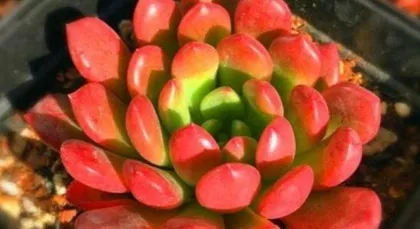Abstract:
As winter arrives, temperatures gradually decrease and the weather becomes dry, which is a severe test for succulent plants. Winter care for succulent plants is particularly important. This article will introduce winter care methods for succulent plants from aspects such as temperature, humidity, and sunlight.
As winter arrives, temperatures gradually decrease and the weather becomes dry, which is a severe test for succulent plants. Winter care for succulent plants is particularly important. This article will introduce winter care methods for succulent plants from aspects such as temperature, humidity, and sunlight.

Maintain Warmth Indoors
Succulent plants prefer warmth and ample sunlight, but when winter temperatures drop, sufficient heating measures must be provided indoors. Indoor temperature should be maintained above 12°C; if it falls below this temperature, succulent plants will lose their vitality. During winter, choose warm locations for succulent plants and ensure proper air circulation in the room.
Avoid Prolonged Exposure to Cold Weather
Succulent plants cannot tolerate very low temperatures and cold weather. If exposed to cold weather for extended periods, leaves may freeze and crack due to low temperatures, leading to plant death. In winter, avoid prolonged exposure of succulent plants to cold weather and move them indoors promptly when necessary.

Maintain Proper Humidity
Dry winter air can cause succulent plants to wilt, drop leaves, and have dried-out foliage. To maintain appropriate humidity for succulent plants, you can mist the leaf surfaces or place a bowl of water near the plants to increase air humidity. However, be careful not to overwater, as this may cause root rot.
Reduce Watering Frequency
In winter, succulent plants grow slowly with reduced metabolic rates, so watering frequency should be appropriately reduced. Generally, watering once every 1-2 months is sufficient. Overwatering can lead to excessive moisture in succulent plants, causing root rot.
Maintain Sunlight Duration and Intensity
Winter has shorter daylight hours and insufficient light intensity, so adequate lighting must be provided indoors for succulent plants. You can use artificial light sources or place succulent plants near sunny windows. However, avoid exposing succulent plants to intense direct sunlight, as this may scorch the leaves.

Ensure Proper Ventilation
In winter, indoor air tends to be more humid. If ventilation is lacking for long periods, the air becomes stale and affects the growth of succulent plants. Ventilate regularly to maintain good air circulation indoors.
Clean Up Fallen Leaves Promptly
In winter, succulent plants grow slowly and tend to shed leaves. If fallen leaves are not cleaned up promptly, they affect the plant's appearance and growth. Clean up fallen leaves during winter to keep succulent plants tidy.
Prevent and Control Pests and Diseases
In winter, higher indoor temperatures and increased humidity can promote pests and diseases. Be vigilant about prevention and control, detect issues early, and take appropriate measures to avoid damage to succulent plants.
Choose Suitable Soil
Succulent plants prefer loose, well-draining soil. In winter, to prevent overly moist roots, choose sandy soil with good permeability, or mix existing soil with sand at a 1:1 ratio.
Protect New Buds
In winter, succulent plants grow slowly, and new buds are fragile and easily damaged. Pay attention to protecting these new buds to avoid injury.
Avoid Excessive Fertilization
In winter, succulent plants have reduced metabolic rates and are not suitable for heavy fertilization. Generally, fertilize once a month with small amounts to prevent overly thickened roots.
Prune Excess Branches Timely
In winter, succulent plants grow slowly, and branches can become overly dense. Prune excess branches timely to maintain good plant shape.
Keep Containers Clean
In winter, succulent plants grow slowly and do not require repotting. However, keep containers clean to prevent contamination and pest infestation.
Maintain Proper Plant Spacing
In winter, succulent plants should be spaced appropriately and not too densely. Overcrowding affects air circulation and increases the risk of pests and diseases.
Winter care for succulent plants is a complex task requiring attention to multiple aspects. Adjustments in temperature, humidity, sunlight, and fertilization are all necessary to ensure succulent plants survive winter safely and thrive in spring.
```